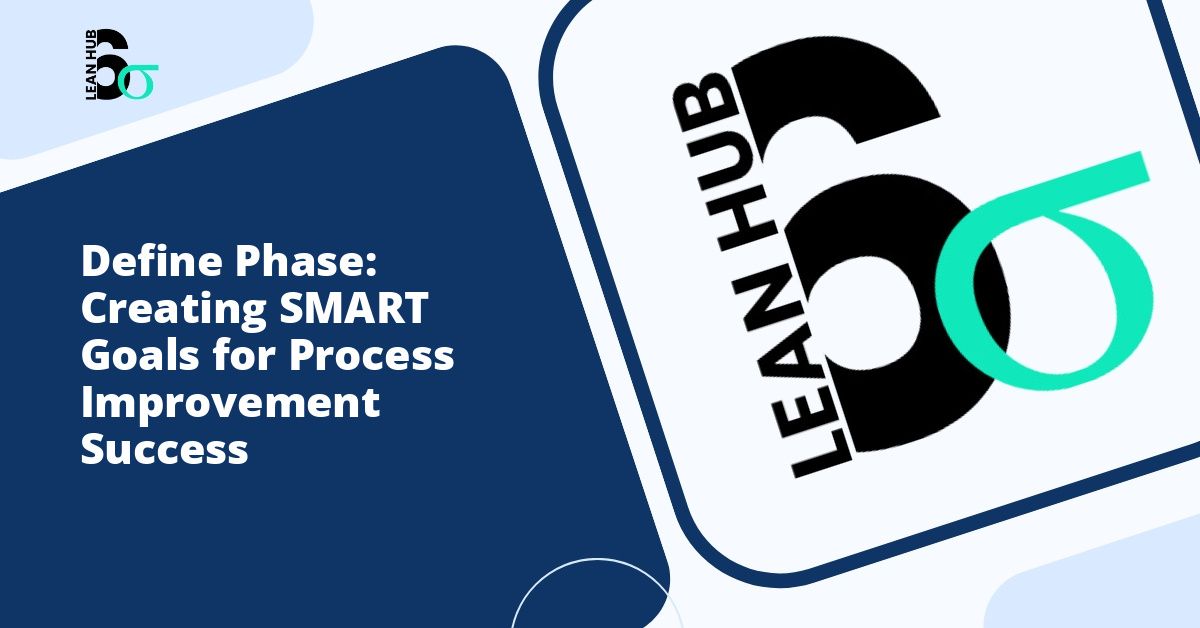The Define phase serves as the foundation for any successful Lean Six Sigma project. This initial stage sets the trajectory for everything that follows, yet many teams stumble here, creating problems that cascade throughout their entire improvement initiative. Understanding and avoiding these critical mistakes can mean the difference between a project that delivers exceptional results and one that fails to meet expectations.
In the DMAIC (Define, Measure, Analyze, Improve, Control) methodology, the Define phase establishes the project’s scope, objectives, and boundaries. It is where teams recognize phase elements that will guide their work and identify the problems they intend to solve. Despite its importance, this stage often receives insufficient attention, leading to fundamental errors that undermine project success. You might also enjoy reading about Lean Six Sigma Define Phase: The Complete Guide for 2025.
Mistake 1: Failing to Clearly Articulate the Problem Statement
One of the most prevalent mistakes teams make during the Define phase is creating vague or overly broad problem statements. A poorly defined problem leads to confusion, wasted resources, and projects that drift off course. Teams often use general terms like “improve customer satisfaction” or “reduce costs” without specifying what aspect of customer satisfaction needs improvement or which costs require reduction. You might also enjoy reading about How to Write a Lean Six Sigma Project Charter: Step-by-Step Guide with Examples.
A weak problem statement fails to communicate the specific issue, its impact on the business, and why it matters. Without this clarity, team members may have different interpretations of what they are trying to accomplish, leading to misaligned efforts and disappointing outcomes. You might also enjoy reading about Project Charter Checklist: 12 Essential Elements Every Six Sigma Project Needs for Success.
How to Avoid This Mistake
Develop a problem statement that is specific, measurable, and clearly linked to business impact. A strong problem statement should answer several key questions: What is the problem? Where does it occur? When does it happen? How big is it? Who is affected?
For example, instead of stating “Customer complaints are too high,” a better problem statement would be: “Customer complaints regarding delayed shipments in the Northeast region increased by 35% in the last quarter, resulting in a 12% decrease in repeat purchases and an estimated revenue loss of $450,000.”
This specific approach provides context, quantifies the issue, and establishes a clear baseline for improvement. It helps the team recognize phase requirements and understand exactly what success looks like.
Mistake 2: Neglecting Stakeholder Engagement and Buy-In
Teams frequently underestimate the importance of engaging stakeholders during the Define phase. They may rush through stakeholder identification or fail to secure genuine commitment from key players. This oversight creates significant obstacles later when teams need resources, approvals, or cooperation from individuals who were not adequately involved from the beginning.
Without proper stakeholder engagement, projects can face resistance, lack necessary resources, or fail to address the concerns of those most affected by the changes. Even technically sound solutions may fail if stakeholders do not support implementation.
How to Avoid This Mistake
Create a comprehensive stakeholder map that identifies all individuals and groups affected by or influencing the project. This includes process owners, customers, suppliers, senior leadership, and front-line employees. Categorize stakeholders by their level of influence and interest in the project.
Develop a communication plan that specifies how and when you will engage each stakeholder group. Conduct one-on-one meetings with key stakeholders to understand their perspectives, concerns, and expectations. Document their input and demonstrate how their feedback shapes the project approach.
In lean six sigma methodology, stakeholder engagement is not a one-time event but an ongoing process. Regular updates and opportunities for input help maintain support and identify potential issues before they become major obstacles.
Mistake 3: Setting Unrealistic or Poorly Defined Goals
Another critical error occurs when teams establish goals that are either too ambitious, too vague, or disconnected from organizational priorities. Setting a goal to “achieve perfection” or “eliminate all defects” sounds admirable but often proves impractical and demotivating when teams cannot reach such lofty targets.
Conversely, goals that are too modest may not justify the time and resources invested in the improvement project. Goals that lack specificity leave team members uncertain about what constitutes success and make it impossible to measure progress effectively.
How to Avoid This Mistake
Employ the SMART criteria when establishing project goals: Specific, Measurable, Achievable, Relevant, and Time-bound. Each goal should clearly state what will be accomplished, how it will be measured, and when results are expected.
Align project goals with strategic business objectives. Demonstrate how achieving these goals will contribute to broader organizational priorities such as revenue growth, cost reduction, customer satisfaction, or market share expansion.
For instance, rather than setting a goal to “improve process efficiency,” specify: “Reduce order processing time from 48 hours to 24 hours within six months, resulting in improved customer satisfaction scores from 7.2 to 8.5 out of 10.”
Validate your goals with stakeholders and subject matter experts to ensure they are both challenging and realistic given available resources and organizational constraints.
Mistake 4: Inadequate Project Scope Definition
Scope creep represents one of the greatest threats to project success, and it often begins with inadequate scope definition during the Define phase. Teams may fail to establish clear boundaries around what is included and excluded from the project. This ambiguity allows the project to gradually expand, consuming more time and resources than planned while diluting focus and effectiveness.
Some teams define scope too narrowly, addressing symptoms rather than root causes. Others define it too broadly, attempting to solve multiple complex problems simultaneously. Both approaches lead to poor outcomes.
How to Avoid This Mistake
Create a detailed project scope statement that explicitly identifies what is in scope and what is out of scope. Use a SIPOC diagram (Suppliers, Inputs, Process, Outputs, Customers) to map the process boundaries and understand where the project begins and ends.
The SIPOC tool helps teams recognize phase boundaries and understand the process context without getting lost in excessive detail. It provides a high-level view that keeps everyone aligned on what the project will address.
Document assumptions and constraints that affect the project scope. These might include budget limitations, timeline requirements, resource availability, or organizational policies. Making these explicit prevents misunderstandings and helps manage expectations.
Establish a formal change control process for managing scope adjustments. While some flexibility is necessary, changes should be evaluated for their impact on project objectives, timeline, and resources before being approved.
Mistake 5: Insufficient Understanding of Customer Requirements
Many teams proceed through the Define phase with an inadequate understanding of who their customers are and what they truly need. They make assumptions about customer requirements based on internal perspectives rather than gathering actual customer input. This disconnect often results in solutions that fail to address real customer pain points or deliver the value customers expect.
In lean six sigma, the voice of the customer (VOC) provides critical direction for improvement efforts. Ignoring or misinterpreting this voice during the Define phase sets the project on a path that may solve the wrong problem or deliver unwanted solutions.
How to Avoid This Mistake
Invest time in identifying your customers accurately. Remember that customers may be external (end users who purchase products or services) or internal (other departments or employees who depend on your process outputs). Each customer group may have different requirements.
Gather voice of the customer data through multiple channels, including surveys, interviews, focus groups, complaint analysis, and observation. Look beyond what customers say they want to understand the underlying needs and problems they experience.
Translate customer feedback into specific, measurable Critical to Quality (CTQ) characteristics. These CTQs represent the attributes that matter most to customers and should drive your improvement efforts. For example, if customers express frustration with “slow service,” determine what “slow” means quantitatively and what timeframe they consider acceptable.
Validate your understanding of customer requirements with actual customers before finalizing project objectives. This verification step helps ensure alignment and prevents costly misinterpretations.
Building a Strong Foundation for Success
The Define phase may seem straightforward, but these five critical mistakes demonstrate how easily teams can go astray. By clearly articulating problems, engaging stakeholders, setting realistic goals, defining appropriate scope, and understanding customer requirements, teams create a solid foundation for their lean six sigma projects.
Success in the Define phase requires deliberate effort, thoughtful analysis, and meaningful engagement with stakeholders and customers. Teams that invest adequate time and attention during this recognize phase position themselves for success in subsequent phases. They avoid rework, maintain focus, and ultimately deliver improvements that create genuine value for customers and the organization.
When teams rush through the Define phase or treat it as a formality, they inevitably pay the price through confusion, conflict, and disappointing results. Conversely, teams that approach this phase with discipline and rigor establish clarity, alignment, and momentum that carries through the entire improvement initiative. The choice is clear: invest in getting the Define phase right, and reap the benefits throughout your project journey.








